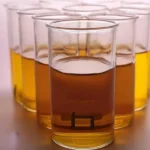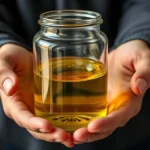Light Naphtha is a flammable liquid hydrocarbon mixture derived from the distillation of crude oil or natural gas condensates. It consists of molecules with 5 to 6 carbon atoms and has a boiling point range between 30°C and 90°C. Light Naphtha is lighter and requires less processing compared to heavier fractions of crude oil, making it an essential feedstock for producing high-value products like gasoline, petrochemicals, and solvents.
Crude oil, the primary source of Light Naphtha, is classified based on its weight (light vs. heavy) and sulfur content (sweet vs. sour). Light crude oil, characterized by higher API gravity, evaporates faster and yields a greater proportion of lighter, refined products such as gasoline and diesel. In contrast, heavy crude oil evaporates more slowly and is used to produce heavier products like asphalt.
Light Naphtha’s low boiling point and light molecular structure make it a versatile component in petrochemical industries. It is widely used as a feedstock for steam cracking to produce ethylene and propylene, key building blocks for plastics and synthetic materials. Additionally, it serves as a blending component for gasoline and a solvent in various industrial applications.
Light Naphtha is typically supplied in bulk and can be packaged to meet customer needs, ensuring flexibility in storage and transportation. Its importance lies in its role as a fundamental raw material in energy production and petrochemical manufacturing.
Light Naphtha (sweet)
| Specification | Test Method | Test |
|---|---|---|
| Sp.gr @15c | D-1298 | 713 |
| Color | D-1500 | - |
| Odour | odourless | |
| Pour point | D-97 | - |
| Distillation | D-86 | |
| IBP | - | 44 |
| 10% | - | 66 |
| 20% | - | 72 |
| 30% | - | 80 |
| 40% | - | 89 |
| 50% | - | 96 |
| 60% | - | 106 |
| 70% | - | 115 |
| 80% | - | 127 |
| 90% | - | 159 |
| FBP | - | 190 |
| Recovery | - | %99 |
| Sulfur | - | 800 |
| No Small | - | |
| Mercaptan | - | 10 |










Work & Energy –
💙💙💙